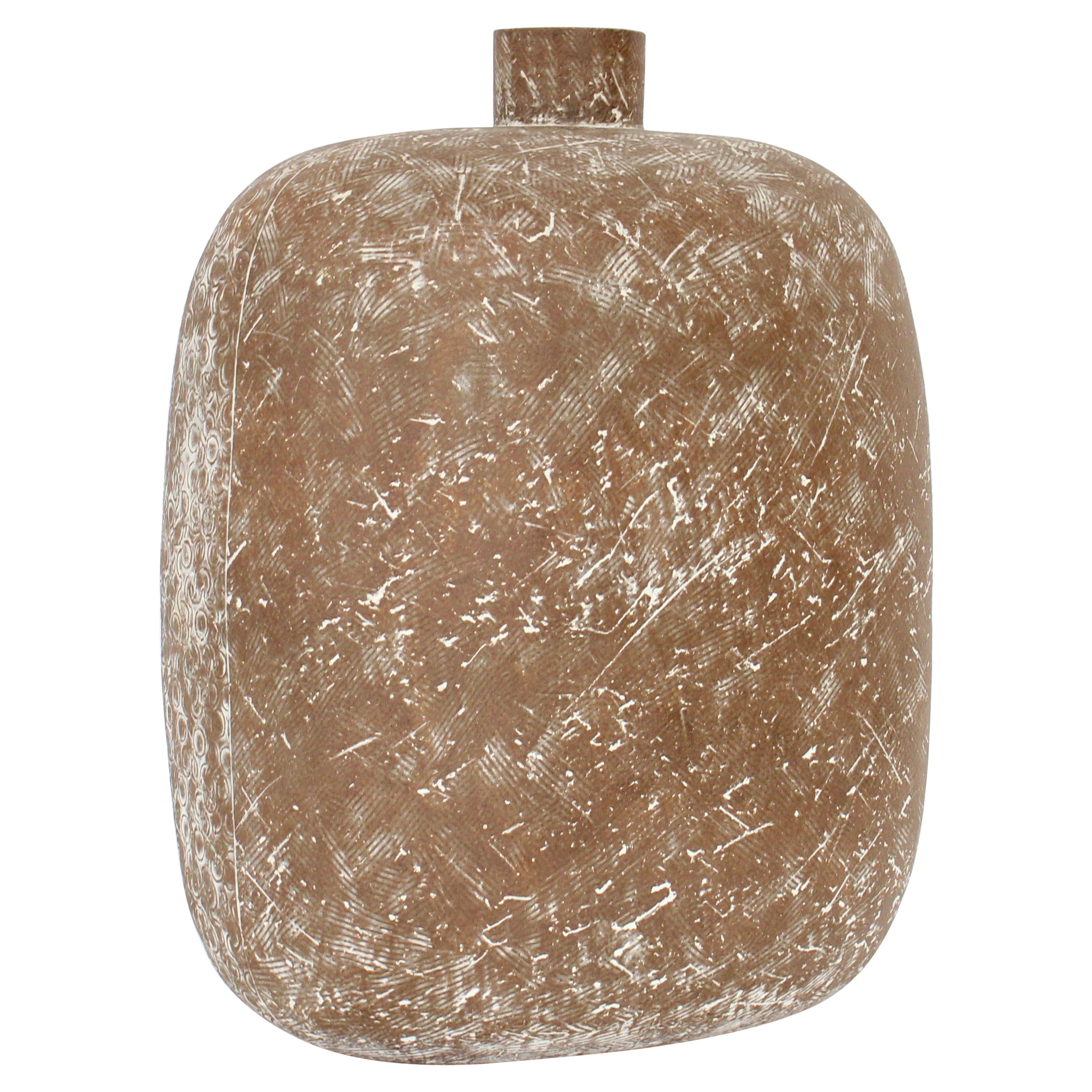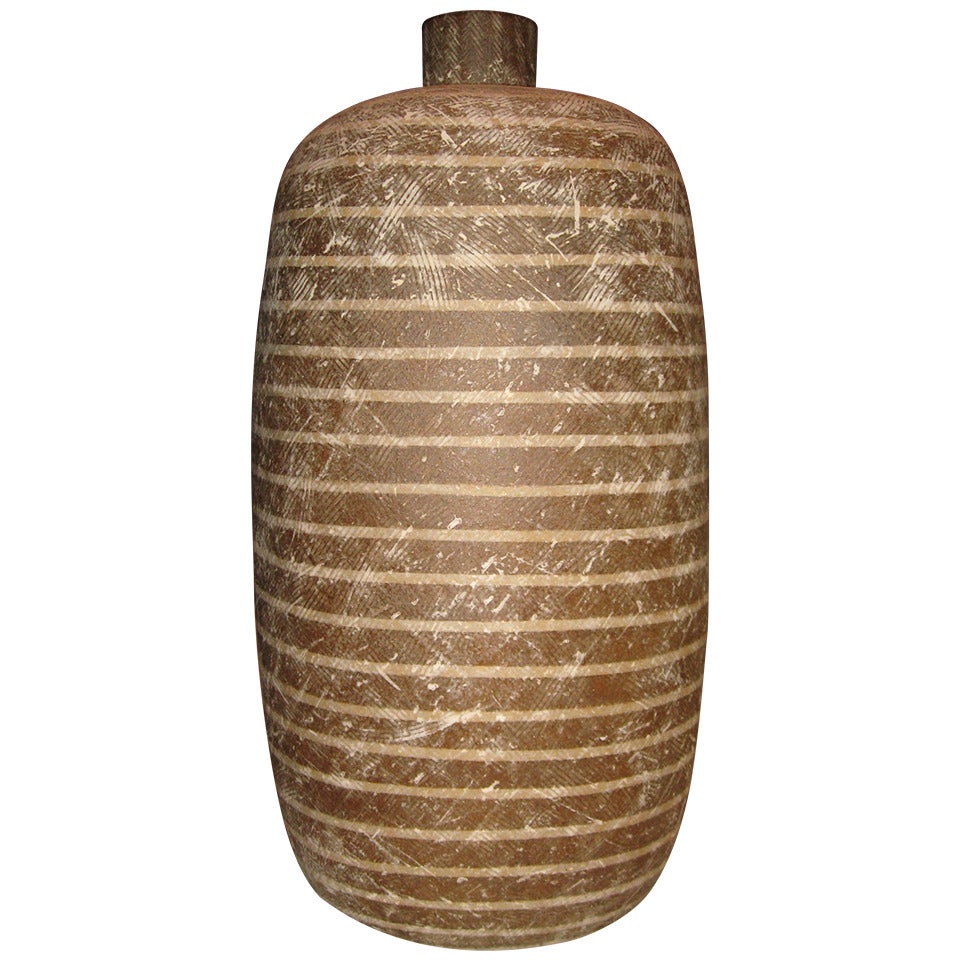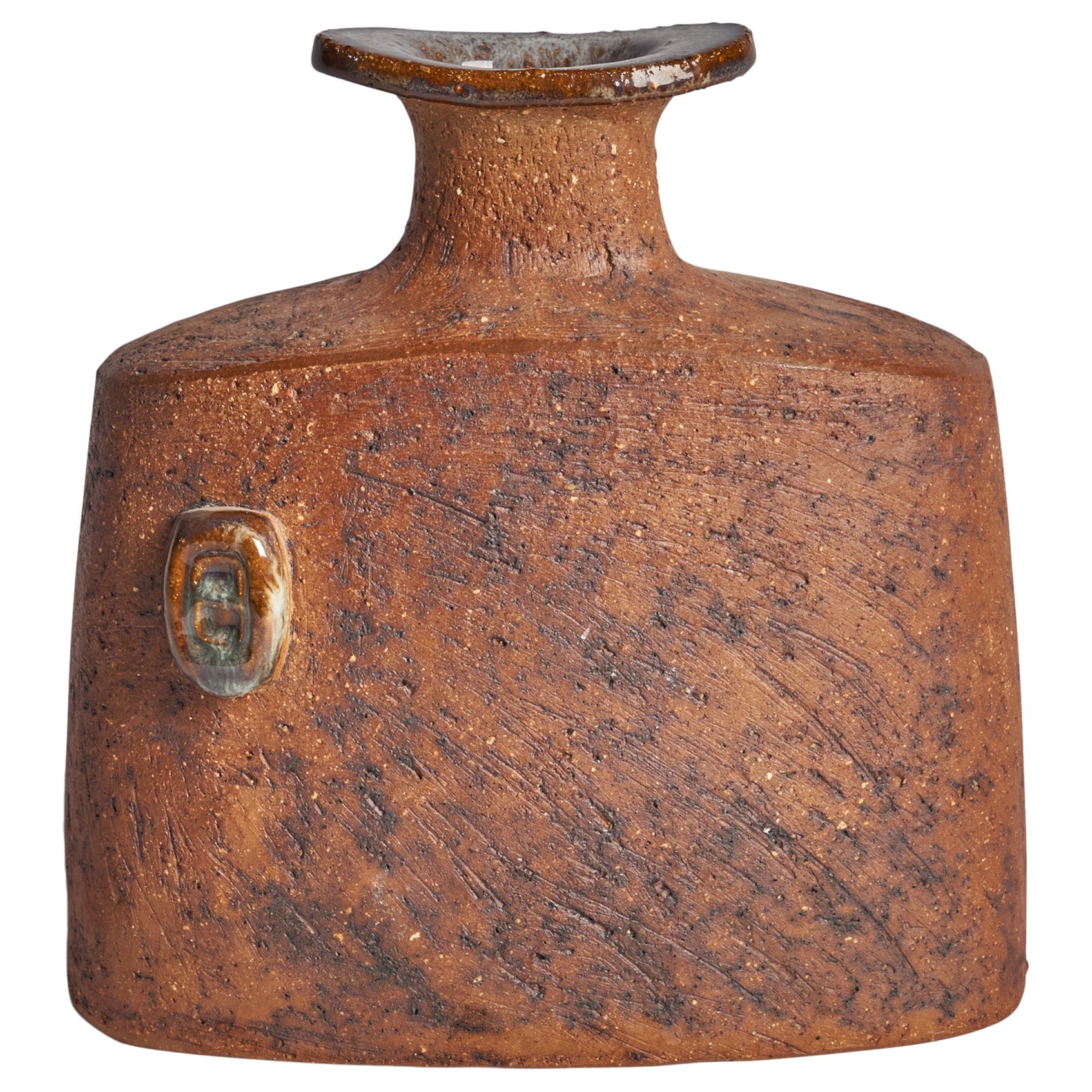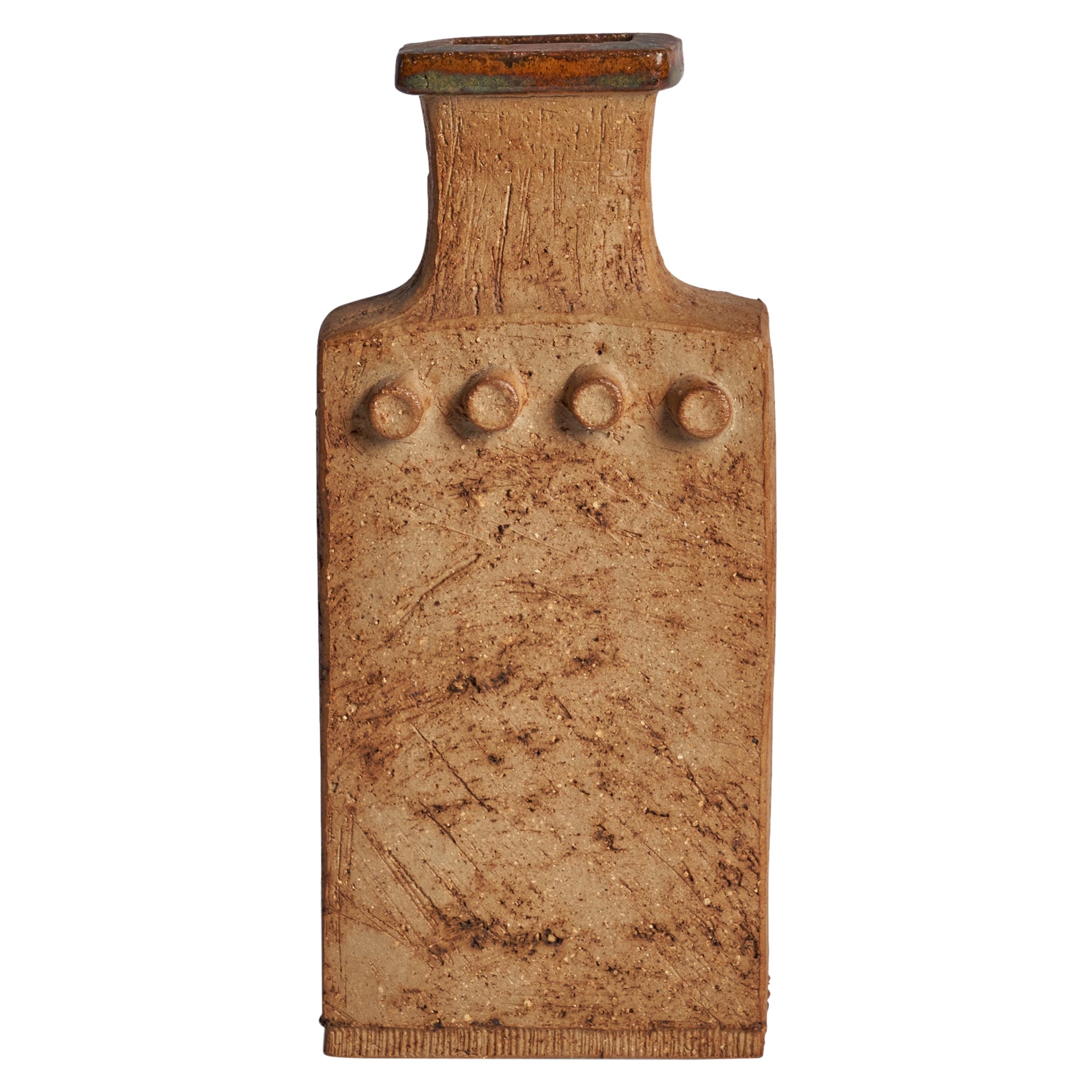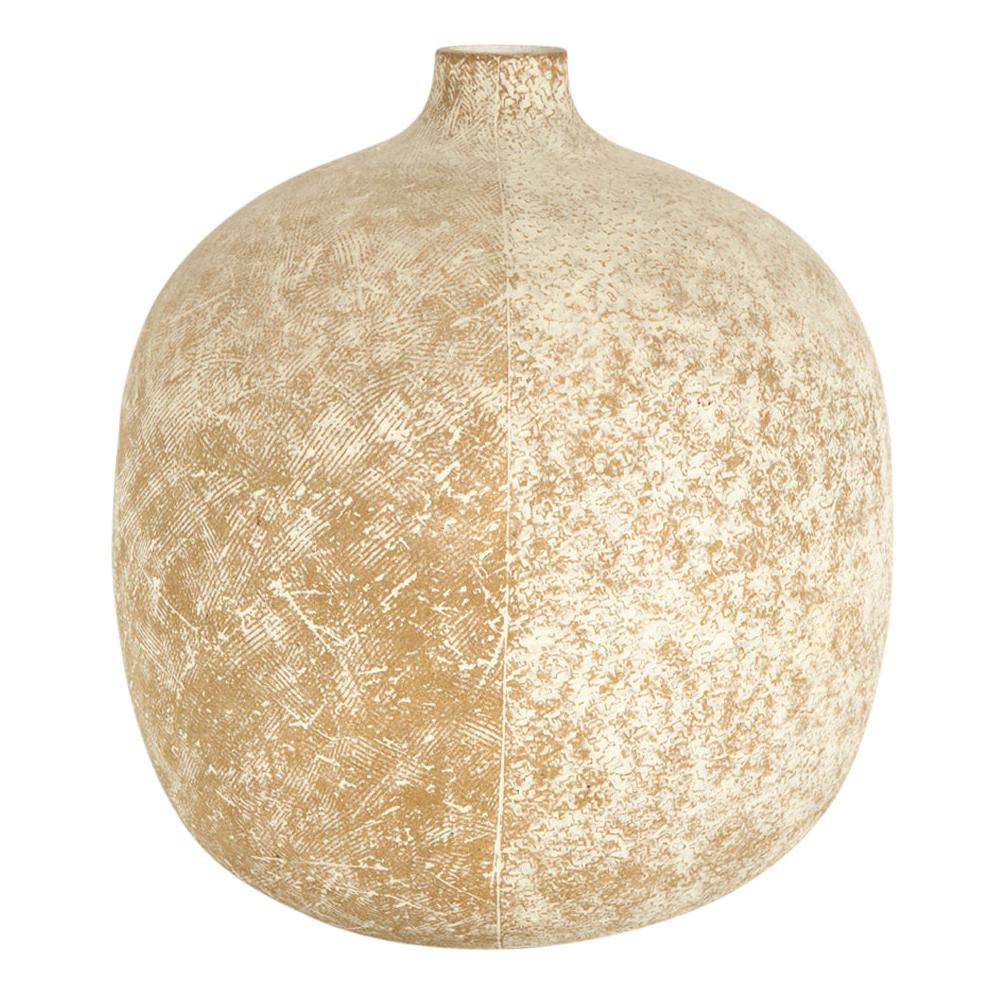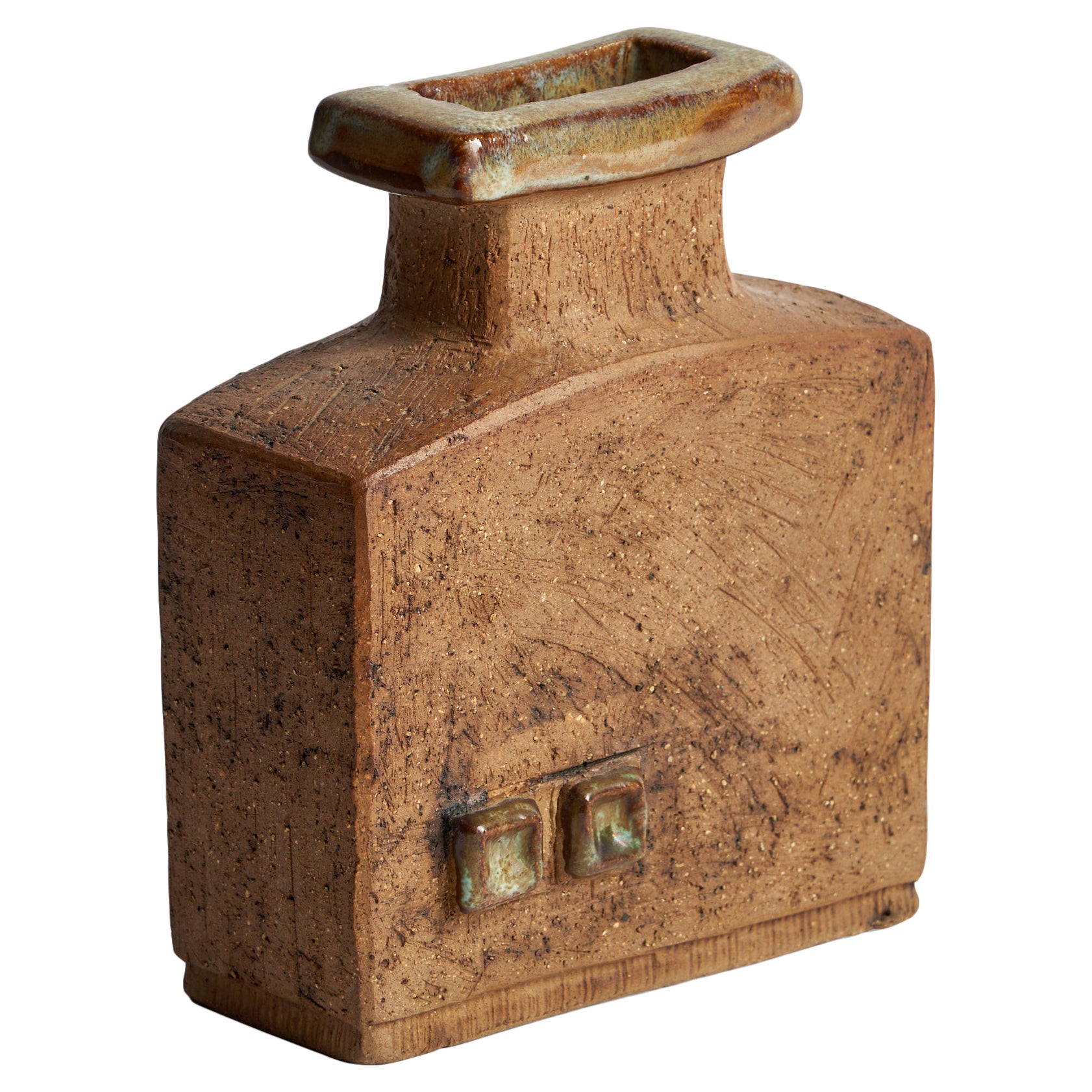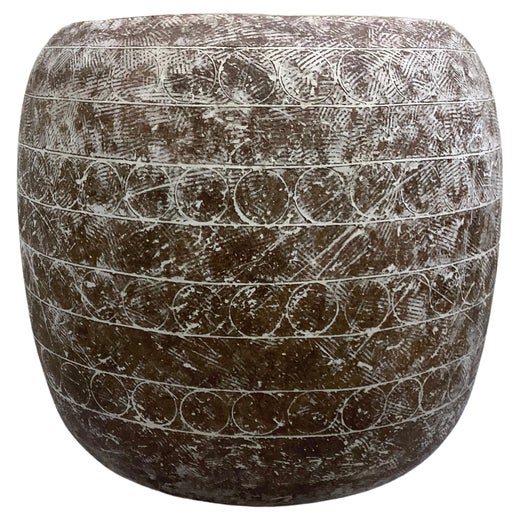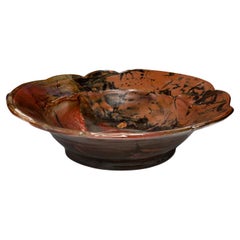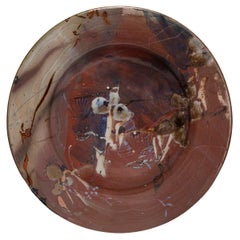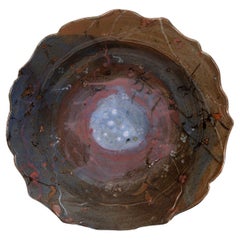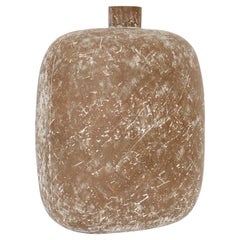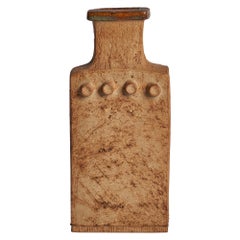Claude Conover Ceramic Stoneware Vessel Signed "Comitan" Inscribed Decorations
About the Item
- Creator:Claude Conover (Artist)
- Dimensions:Height: 12 in (30.48 cm)Width: 8 in (20.32 cm)Depth: 7 in (17.78 cm)
- Materials and Techniques:
- Place of Origin:
- Period:1980-1989
- Date of Manufacture:1980-90
- Condition:
- Seller Location:Bloomfield Hills, MI
- Reference Number:1stDibs: LU7781236753232
Claude Conover
Artist Claude Conover was a master ceramicist, known for rustic pieces that appear roughly finished yet were created with meticulous care. Though he was not averse to using color and glaze, Conover is most noted for his monochromatic ceramics and pottery. These pieces have a simple, rugged appeal, setting them apart from many of his mid-century modern contemporaries. He often etched lines onto the surfaces of his vessels, planters and other decorative objects, giving them an old-world appearance.
Originally from Pittsburgh, Pennsylvania, Conover attended the Cleveland Institute of Art. From there, he worked for 30 years as a commercial designer. At 55, Conover quit his job and devoted his time to making ceramics, a skill that he taught himself.
Conover put himself on a strict, seven-day weekly schedule in which he focused on specific parts of the ceramic process, from rolling the vase necks to the final furnacing and glazing. Each week, he turned out an average of six unique handmade pieces, creating about 250 works per year. Conover pursued a simplistic style, finding the beauty within the materials themselves without the need for lavish ornamentation or opulent colors. He drew inspiration from nature, always keeping his eyes open to new ideas for form and utility.
Over the course of his career, Conover’s work was shown in scores of museum exhibitions all over the United States. In 1983, he won the Cleveland Arts Prize for Visual Arts. Conover’s ceramic pieces are still widely celebrated by collectors and art enthusiasts. Today, many museums and private collections hold his ceramics and pottery, including the Cleveland Museum of Art and the Smithsonian American Art Museum.
On 1stDibs, find Claude Conover serveware, vases and sculptures.
- ShippingRetrieving quote...Shipping from: Detroit, MI
- Return Policy
More From This Seller
View All1990s American American Classical Planters, Cachepots and Jardinières
Ceramic
Late 20th Century American Decorative Dishes and Vide-Poche
Ceramic
1990s American Expressionist Decorative Dishes and Vide-Poche
Ceramic
1990s American Expressionist Decorative Dishes and Vide-Poche
Ceramic
Late 20th Century American American Craftsman Mounted Objects
Ceramic
1990s American Expressionist Decorative Dishes and Vide-Poche
Ceramic
You May Also Like
Vintage 1970s American Mid-Century Modern Vases
Ceramic
Vintage 1960s American Mid-Century Modern Vases
Pottery
Vintage 1970s Swedish Vases
Stoneware
Vintage 1970s Swedish Vases
Stoneware
Vintage 1960s American Mid-Century Modern Vases
Stoneware, Ceramic
Vintage 1970s Swedish Vases
Ceramic
